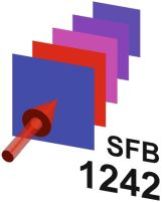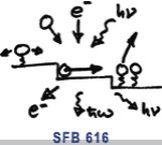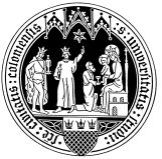Collaborations
In close collaboration with

Non-Equilibrium Dynamics of Condensed Matter in the Time Domain
Non-equilibrium states can be created in condensed matter through ultrashort pulsed external stimuli such as light, pressure, electrical voltage or particles. This Collaborative Research Centre 1242 aims to achieve a material specific, microscopic understanding of such non-equilibrium states.To this end, new tools in experimental and theoretical physics will be developed to describe the time evolution from the moment of the stimulus to a state close to equilibrium in time and space.

The transformation of one kind of energy into another accompanies all processes in our world, and frequently also propels them. Many of these transformations - like the chemical reactions of catalysts or in sensors, or the mechanical friction or dispersion of charge carriers in microprocessors - take place at surfaces, or at the interfaces of solid materials.
The Collaborative Research Center 616 targets the clarification of these elementary procedures through the energy dissipation at surfaces. The program of the SFB616 is broadly designed and comprises the whole spectrum of stimulation and relaxation from the eV regime (particle interaction, laser stimulation, reactions and surfaces) through phonons and frictions losses in the meV regime to the meV area (electromigration)

CeNIDE, the Center for Nanointegration Duisburg-Essen, was founded in 2005 by members of the Faculties of Physics, Chemistry and Engineering, as a network for the many nano activities at the University of Duisburg-Essen (UDE).

P. Zahl ; P. Sutter ; Brookhaven National Lab (BNL) ; Upton, NY, USA
On Long Island, the influence of bi-adsorbate atoms and -ilands on the surface state of Bi (111) is investigated. This is done in close collaboration with the Center for Functional Nanomaterials (CFN) on an LT-STM at temperatures of 5K. [Joint publications]

F. M. Ross ; IBM Research Center, Yorktown Heights ; NY, USA
"Manipulation of Surfaces on the Nanometer Scale": In this project, the influence of locally by FIB implanted areas on Si surfaces on the epitaxial growth and the self-assembly process will be studied. In addition to Ge, metals, clusters and molecules should be applied to the structured surfaces. [Joint publications]

Prof. Dr. Kelly R. Roos ; Caterpillar College of Engineering and Technology ; Peoria, IL, USA
Since his research sabbatical of one semester in 2003 we have been working together continuously in the field of silver diffusion and desorption. [Joint publications]

Prof. Dr. J. Falta ; Surface Physics Group Prof. Dr. Falta
In our daily scientific work we focus on structural aspects of surface phenomena like growth processes, surface structuring, self assembly, catalysis, reaction control, nano-colloidal particles, and interface structure. Examined materials cover the full range from semiconductors to metals and insulators. [Joint publications]

Prof. Dr. T. Michely ; Research Group Michely
In recent years, research has been successfully conducted in the area of the growth of graphene on iridium. Measurements using photoemission microscopy have contributed significantly to the understanding of growth. [Joint publications]

Prof. R.J. Dwayne Miller; Universität Hamburg; Miller Group; University of Toronto, Toronto, Kanada
There is cooperation in time-resolved phenomena. In particular, the production and characterization of thin and well-defined metallic films on salt substrates for time-resolved transmission electron diffraction is one of the competencies of our group. [Joint publications]

Prof. Dr. E. Pehlke; Christian-Albrechts-Universität zu Kiel
The group works in the field of density function theory, which is very suitable for the explanation of small scale phenomena of experimental physics.

Prof. Dr. J. Krug; Universität Köln
With the group, we have worked very successfully in the field of silver desorption of Si areas. A dynamic equilibrium is generated at higher temperatures by the balance of diffusion and desorption. With the help of the theoretical description by the Krug group, basic diffusion parameters could be extracted from the measured data. [Joint publications]

Prof. Dr. IR. B. Poelsema ; PIN RESEARCH GROUP ; Enschede, The Netherlands
With this group we have researched in recent years in growing graphene on iridium. For this purpose, photoemission measurements and SPA-LEED measurements from our group were combined with LEEM measurements from the Poelsema group. [Joint publications]



